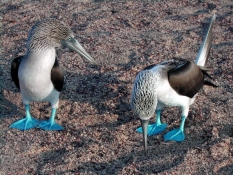Brian's Class Materials- SPRING 2013
SEYS 778
SEYS 778
Science Education Research Article Review Activity
The purpose of this activity is
to re-immerse you in the world of science education
research.
Instructions: Work in your research group on this activity.
Instructions: Work in your research group on this activity.
- Choose an article from the list below. You do not need to print out your article.
- Take about 15 minutes to scan the article, paying special attention to the following:
- the abstract
- the research design and data collected
- any tables or figures
- results and conclusions
- Come up with strengths and weaknesses of the study and post these, along with the link to your article on our Discussion Board in BlackBoard.
- After posting your review, view the reviews from other groups.
- Socioscientific Decision Making and the Ocean: A Case Study of 7th Grade Life Science Students
- Effects of Cooperative Learning Strategy on Junior Secondary School Students Achievement in Integrated Science
- The Contribution of Science Stories Accompanied by Story Mapping to Students’ Images of Biological Science and Scientists
- Students’ Considerations of Archimedes Law - Use of Historic Introduction in Science Teaching
- The Achievement of Student Subgroups on Science Performance Assessments in Inquiry-Based Classrooms
- Identifying Valuable Components of Student Behavior: Things They Do Right When They Solve Wrong
- Is There Something Useful In Students’ Mistakes? : A Cognitive Resources-Based Approach
- Factors That Influence Sense of Place as a Learning Outcome and Assessment Measure of Place-Based Geoscience Teaching
- Concept Maps as Tools for Assessing Students’ Epistemologies of Science
- A Comparison of Student Learning in STS vs Those in Directed Inquiry Classes
- The Suitability of External Control-Groups for Empirical Control Purposes:a Cautionary Story in Science Education Research
- The
Origin and Extent of Student’s Understandings: The
Effect of
Various Kinds of Factors in Conceptual Understanding
in Volcanism - Learning Junior Secondary Science through Multi-Modal Representations
- Adolescent
Students’ Images of an Environmental Scientist:
An Opportunity for Constructivist Teaching - *Sisters in Sport Science: A Sport-Oriented Science and Mathematics Enrichment Program
- Students' Problem Solving Strategies in Stoichiometry and their Relationships to Conceptual Understanding and Learning Approaches
- No
Time for Venus Flytraps: Effects of End-of-Course
Testing
on Biology Curriculum in Two States - *Promoting Science Instruction and Assessment for English Language Learners
- Visual
Thinking Networking Promotes Problem Solving
Achievement
for 9th Grade Earth Science Students1 - Which Comes First: Computer Simulation of Dissection or a Traditional Laboratory Practical Method of Dissection
- Standardized Testing in Physics via the World Wide Web
- The Tension Between HyperText Environments and Science Learning
- The Effects of English Language Proficiency and Scientific Reasoning Skills on the Acquisition of Science Content Knowledge by Hispanic English Language Learners and Native English Language Speaking Students
- The
Use of the National Science Education Standards to
Critique a Standardized High School Biology Examination - High School Students' Perceptions of Evolutionary Theory
